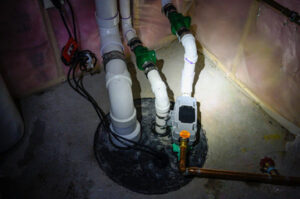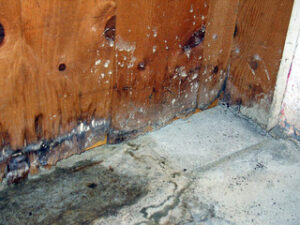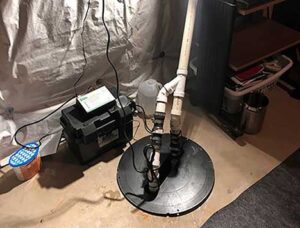Plumbers repair, install, and maintain the pipes, fixtures, and appliances that allow water (and sometimes gas) to flow through your home. Plumbers Cleveland Ohio includes fixing leaks, clogs, and other problems with your kitchen, bathroom, laundry, and outdoor plumbing.
Common plumbing problems include dripping faucets and toilets, slow-draining sinks, and leaking showers. Plumbers also deal with more serious issues, such as water filtration problems and poor water quality.

There are many factors that can affect the cost of plumbing repair. These include the plumber’s hourly rate, the type of plumbing repair needed, and the location of the home. In addition, some plumbers charge extra for overtime or weekends. In order to save money, it’s important to shop around for a plumber. Look for a reputable company with good reviews. You can also ask friends and family for recommendations. You should also make sure the plumber you hire offers a warranty on their work.
Some common plumbing repairs include fixing leaky faucets, clogged drains, and water heater problems. These issues can be expensive, but they can also lead to serious damage if left untreated. It’s important to get them fixed as soon as you notice them. This will help prevent costly repairs in the future.
Leaks are one of the most common plumbing problems. They can cause severe water damage if not repaired quickly. Leaks can be caused by faulty joints, corrosion of pipes, or just wear and tear. It’s important to have your pipes inspected regularly and to have any problems fixed as soon as possible.
Another common plumbing problem is a clogged drain or toilet. This can be extremely frustrating and inconvenient. A clogged drain can cause flooding, water backups, and even health problems. The most common way to fix a clogged drain is to use a plunger or snake. If these don’t work, you can try a chemical drain cleaner.
A more serious plumbing issue is a broken pipe. This can be very costly to fix and can result in water damage if not addressed immediately. If you have a broken pipe, it’s important to call a plumber right away. They will be able to assess the situation and determine the best course of action.
In some cases, it may be more cost-effective to replace the entire pipe rather than repairing it. This is especially true if the pipe is old and worn out. It’s also important to check if your insurance company covers the cost of plumbing repair. If not, you can consider buying a home warranty to cover any repair costs.
If you notice a plumbing problem, it is important to get it fixed as soon as possible. This will help prevent further damage and save you money on utility bills. Leaking faucets, running toilets, and low water pressure are all common problems that need to be addressed as soon as possible.
Some of these problems may require professional plumbers to complete the job. However, others can be done by homeowners with some basic tools. Here is a look at some of the most common plumbing repair jobs and their costs.
Clogged drains and toilets are a huge inconvenience for homeowners. These issues can cause a lot of problems, including back-ups, flooding, and increased water bills. Most clogs can be easily fixed with a plunger, but if they persist, it’s time to call a plumber.
Dripping faucets and shower heads can also be a big nuisance for homeowners. Not only does the drip-drip-drip get annoying, but it can lead to costly water bills and damage to your home’s fixtures and pipes. Many of these issues can be easily fixed with a simple washer or a new faucet cartridge.
Sewer line clogs and breaks are another common issue that need to be addressed immediately. These issues can cause flooding, water damage, and even health issues. The cost of a sewer line repair depends on the location and severity of the clog or break.
The plumbing systems in your house work hard to keep you clean and comfortable. But when something goes wrong, it can be a real hassle to find a reliable plumber and fix the problem. If you follow these tips, you can make the process much easier and less stressful for yourself and your family.
It’s always a good idea to hire a professional plumber for most repairs, especially those that involve major leaks or clogs. These professionals have the tools and experience to fix your problems quickly and efficiently. In addition, they will ensure that the job is done correctly the first time. Plus, they will be able to spot potential problems before they become serious.
A plumbing repair job requires the use of a variety of tools. Having the right tools can make the job much easier and ensure that the plumbing repairs are completed correctly. Some of the most important plumbing tools include wrenches, plungers, and safety gear. Plumbers also need a toolkit full of specialty tools and replacement parts. These tools are needed for fixing leaky valves and other problems in the home.
While you can buy most of the plumbing tools needed at a hardware store, it is best to support your local plumber’s supply house. These businesses can provide you with the necessary tools and equipment for your project at a reasonable price. They will also be able to help you with any questions or concerns that you may have.
If you are a beginner, it is best to start with the basic hand tools that are available at most hardware stores. These include a pipe wrench, basin wrenches, adjustable wrenches, and pliers. Having these hand tools on hand will allow you to handle the majority of basic plumbing tasks. You should also consider getting a toolbox to keep your tools in. This will make them easy to find when you need them.
Another important plumbing tool is a drain snake. This is a long cable that can be inserted into the drain to break up and clear clogs. This tool can be used on sinks, tubs, and toilets. A drain snake is a valuable asset for any homeowner who is looking to do their own plumbing repairs.
Keeping the proper tools on hand will help you save money and time on plumbing repairs. However, if you are unable to fix the problem yourself, it is always best to call a professional plumber for assistance. It is not worth attempting a fix without the proper tools, as this could result in additional damage to your pipes and fixtures.
Other tools that you should consider having on hand include a hole saw and a plumber’s torch. The hole saw is a tool that cuts through different materials, including metals and plastics. It can also be used to cut holes in walls or floors. The plumber’s torch is a powerful heat source that allows you to solder copper piping and other items.
The level of experience a plumber has can have an impact on the cost of plumbing repair. More experienced plumbers tend to charge more per hour than newer plumbers. However, it is important to note that the experience level of a plumber can also vary depending on the type of job at hand. For example, simple repairs, like a leaky faucet, may not require as much time or skill as more complex tasks, such as replacing a water heater.
Regardless of whether the job is big or small, plumbers must be able to work in tight spaces with a variety of tools and materials. Additionally, they must be comfortable working in both indoor and outdoor environments as well as at all times of day and night. Additionally, punctuality is a must. When a plumber shows up late for a job, it can reflect poorly on their professionalism and can result in lost customers.
Plumbing repair involves a number of different tasks, including inspecting existing pipe work; testing pressure levels; repairing or installing pipes, fixtures, and appliances; and maintaining sewage systems. In order to complete these tasks, plumbers must be able to read blueprints and have knowledge of local plumbing codes.
Some common plumbing problems include clogged drains, water line freezing and bursts, and leaking or dripping faucets. These issues can be a major inconvenience for homeowners and should be fixed as soon as possible to avoid further damage to the home’s structure or belongings.
Plumbers must be able to troubleshoot problems and determine the best solution for each situation. This can involve a number of different techniques and tools, such as drain cleaning, water piping inspections, and water meter readings. Additionally, plumbers must be able to install and repair appliances such as toilets, sinks, bathtubs, and dishwashers.
UTA’s comprehensive plumbing training course will teach you all of the skills and tools necessary to become a professional plumber. This program includes OSHA 30 Hour certification and uses the industry-recognized National Center for Construction Education & Research (NCCER) Construction Core and Plumbing Level 1 curricula.






